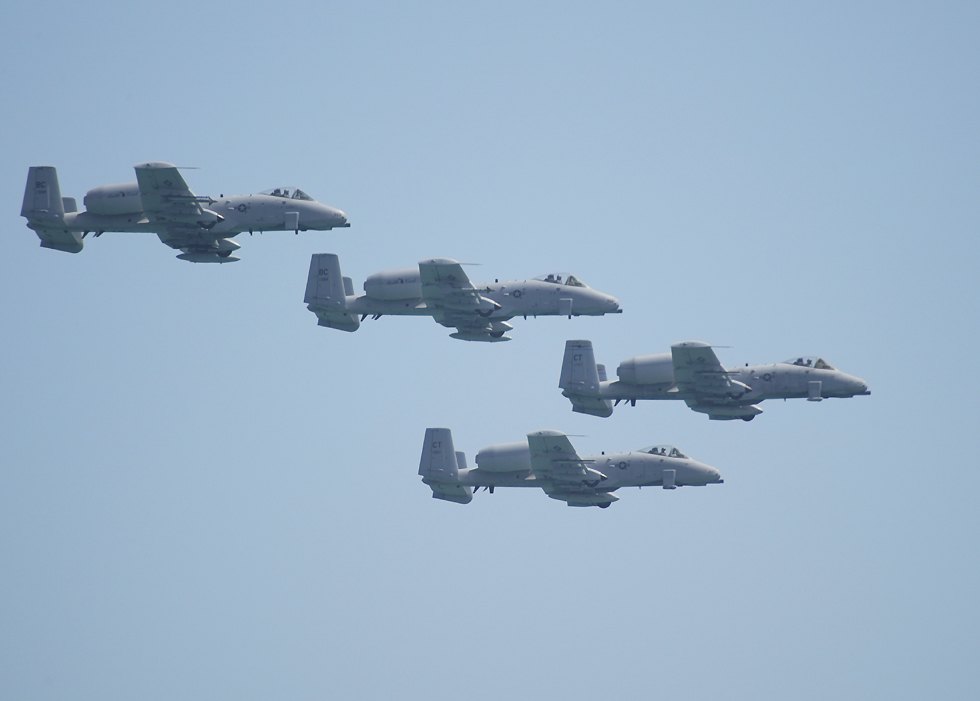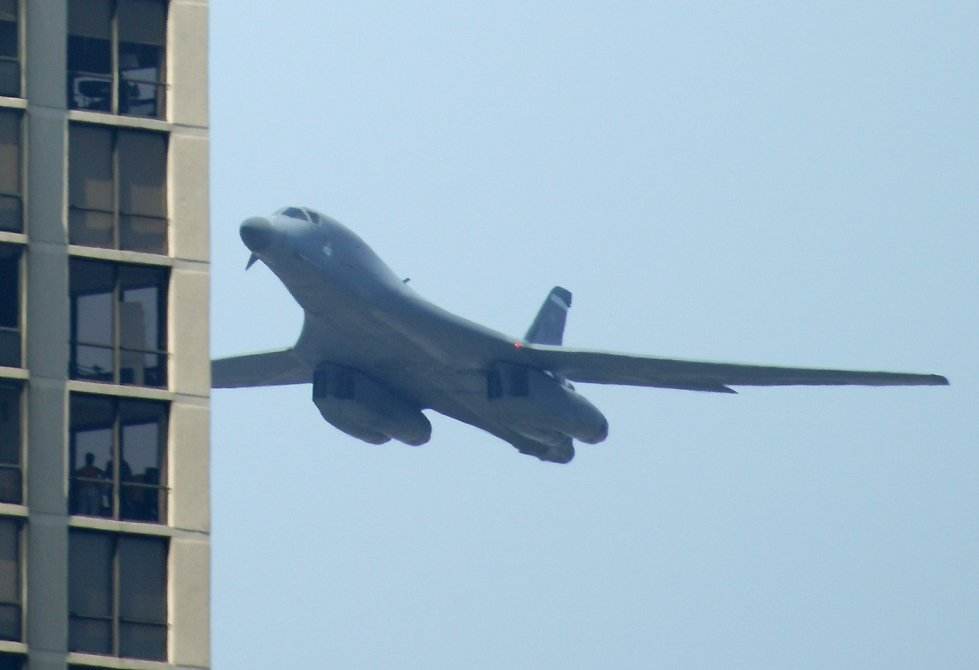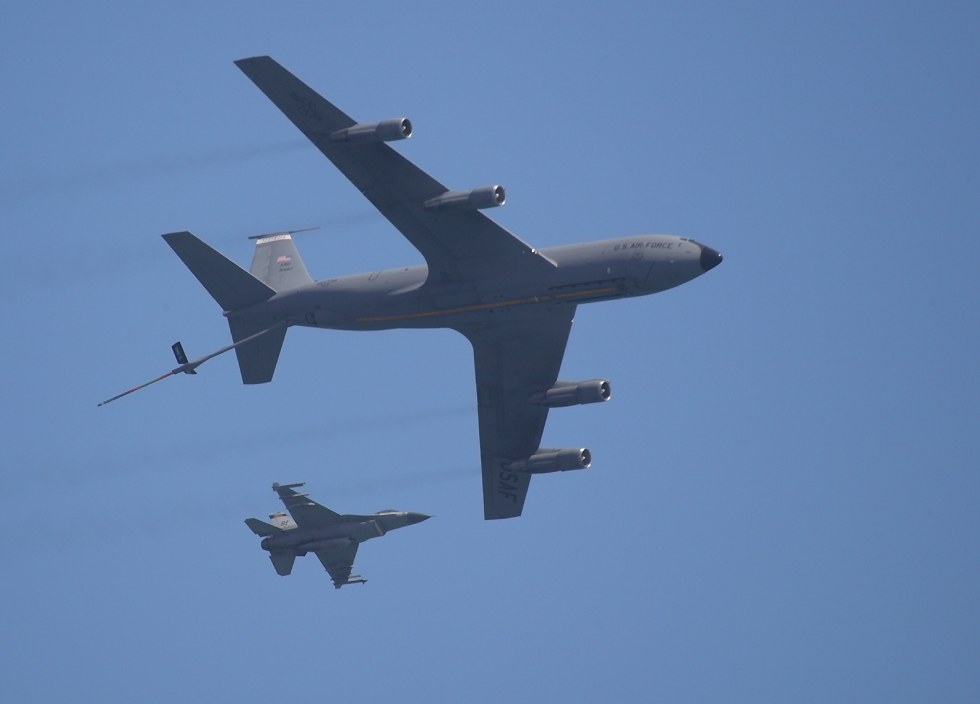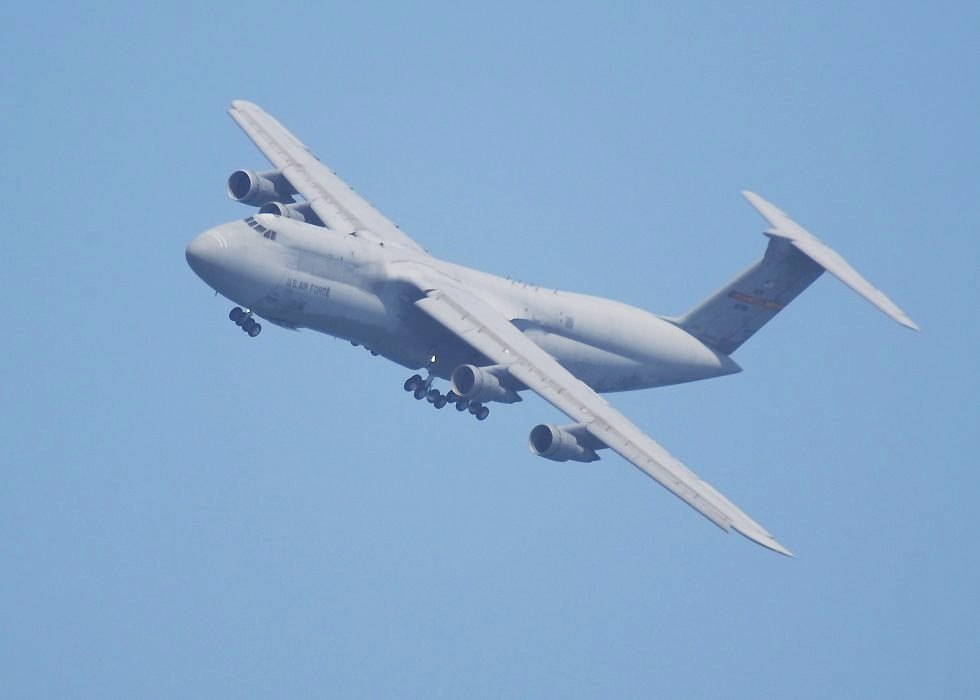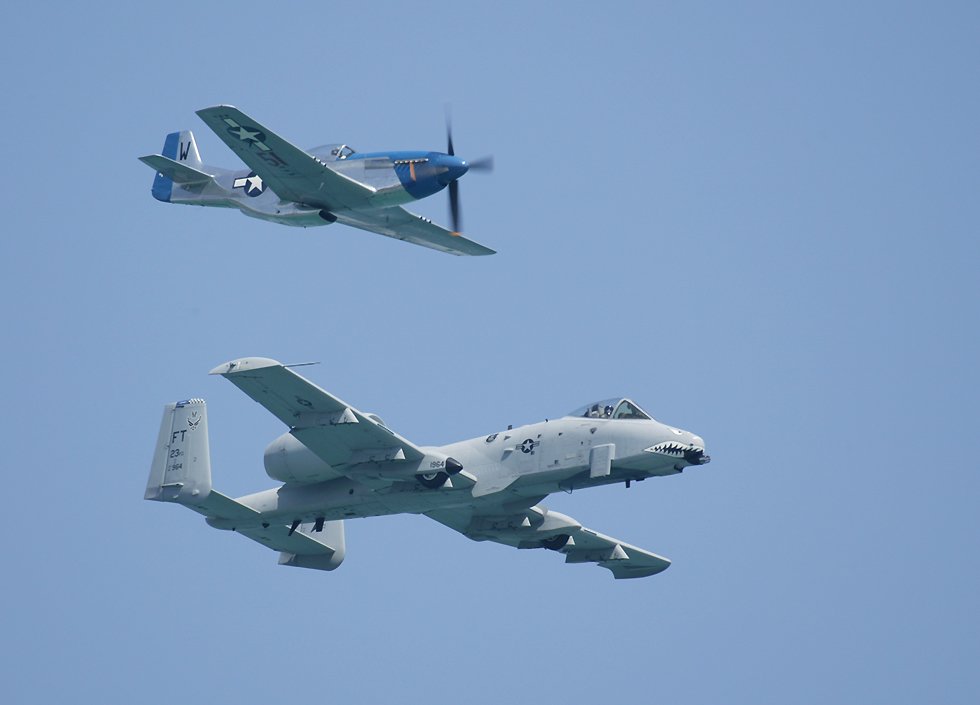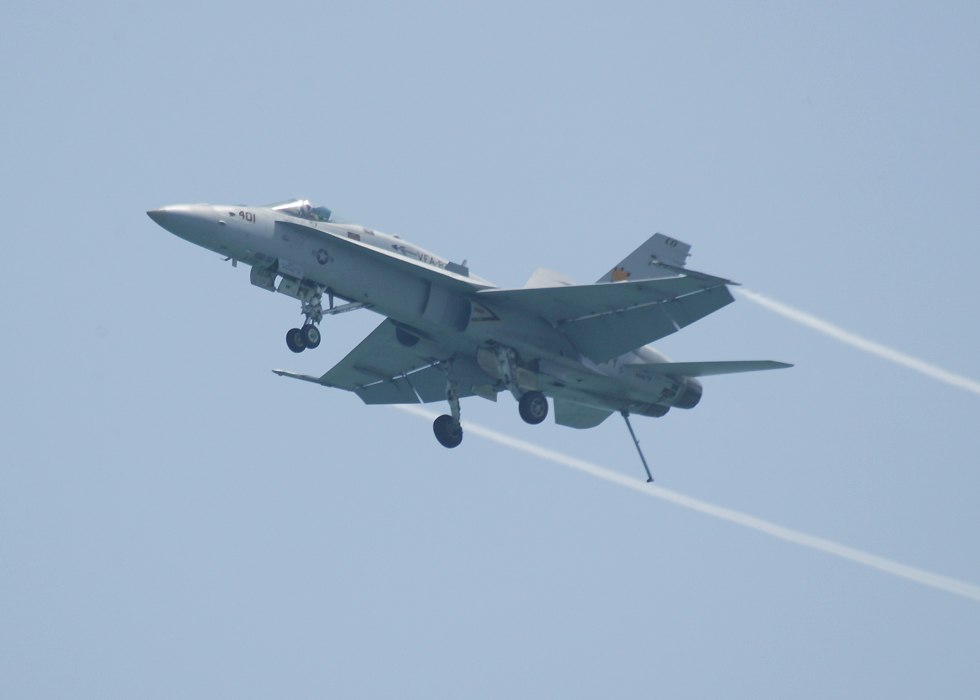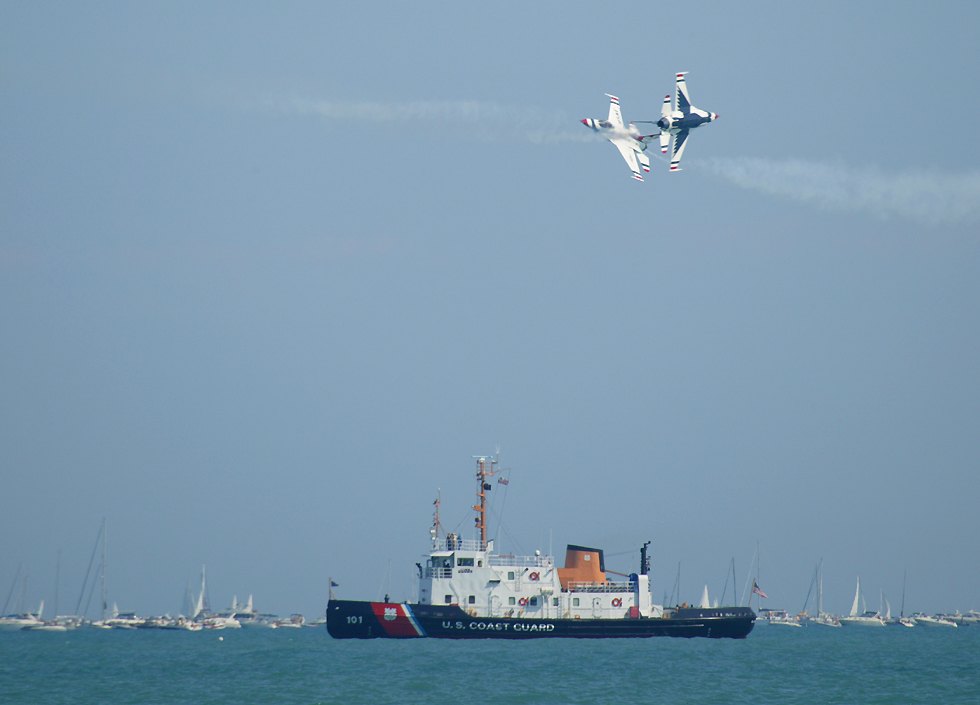Highlights of the 2003 Chicago Air and Water Show
|
What they wanted to see and hear was speed and noise! This F-14 Tomcat was just the ticket, doing a high-speed pass which resulted in a couple of brief bursts of water vapor, lasting small fractions of a second, as the plane flew through very localized areas of especially high humidity. The partial vacuum left behind as the plane zooms past is enough to cause the water vapor to condense into droplets, even if it is just for a moment. |
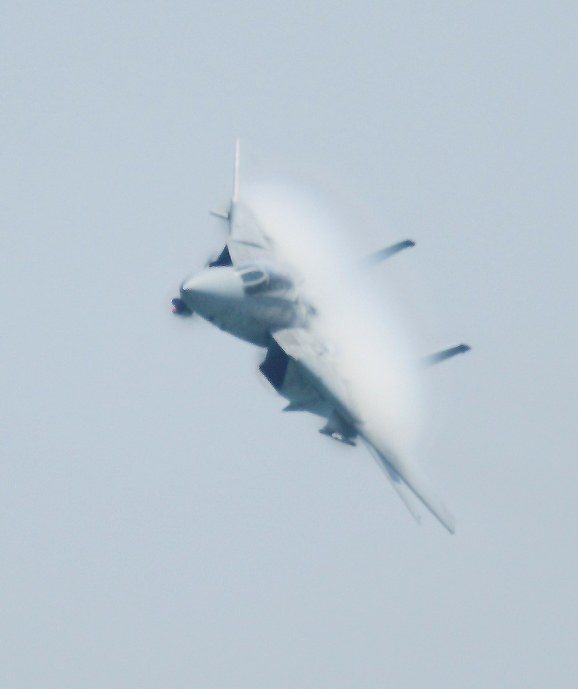 |
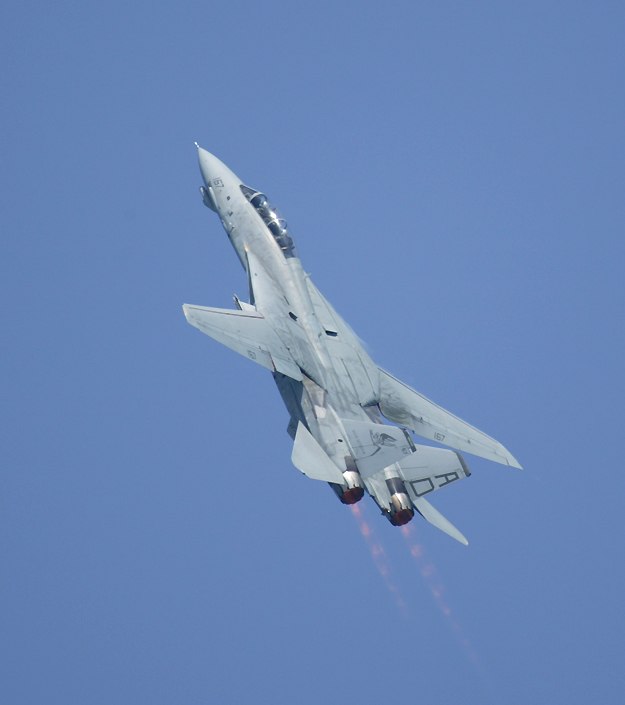 |
The Tomcat is due to be retired in just a few years, replaced by the F-18 Hornet. The F-14 itself was developed because the navy didn't like the size and weight of the F-111 Aardvark, which was a typical politicians' aircraft intended to meet the needs of both the air force and the navy, just as the current F-35 joint strike fighter is supposed to be a "one size fits all" solution, which as well as all its other duties is also supposed to take off and land vertically to satisfy the marines' desire for an aircraft like their current AV-8B Harrier. Like almost all such compromise aircraft, the F-111 wasn't really successful, serving adequately with the air force, but deemed totally unsuitable by the navy. Instead the navy asked Grumman to develop the F-14, which has the same moveable "swing wings" as the F-111, allowing slow speed maneuverability when swept forward, as you see it here, and high speed when swept backwards, as in the previous photo. Unlike the F-111, which is a fighter-bomber, the F-14 is a pure fighter, and still very capable in that role. |
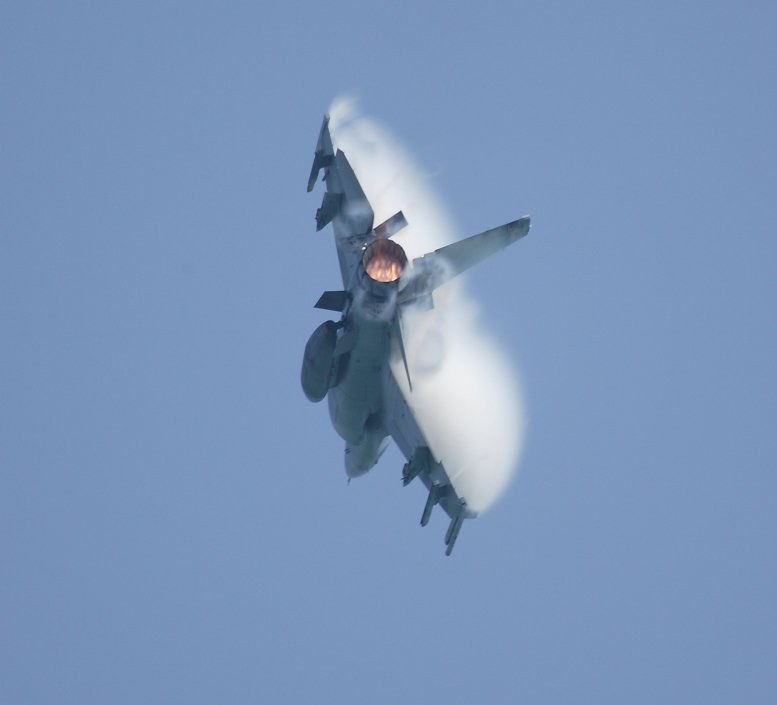
|
Completing the roundup of current American fighters is this F-16 Fighting Falcon, which also shows that it's no slug when it comes to pulling clouds of vapor in a fast turn! The F-16 and F-18 both resulted from a contest in the mid 1970s for a light-weight fighter to replace existing designs. Unusually, both aircraft showed enough promise to be brought into service, but the navy opted for the F-18 Hornet because of its twin engine design, which provides a significant safety advantage when you're flying long distances over water and an engine fails. |

